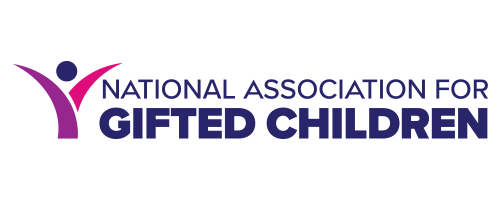Why Are Gifted Programs Needed?
High-ability students need gifted education programs that will challenge them in regular classroom settings, along with accelerated and enrichment programs to make continuous progress in school. Gifted students are different from their peers both in their potential and in relation to their learning speed, depth of learning, and interests. [1]
- In one study, researchers found classroom teachers have insufficient knowledge for educating gifted students (9/17 interviewees), and some teachers expressed too much of a workload to make an effort for gifted students needing specialized educational supports (7/17 interviewees), as one of their participants explained, “I cannot spare time for both supplementary homework and creative activities” (p.77). [2] Additionally, gifted students need gifted programming in many cases because the “general education program is not yet ready to meet the needs of gifted students” (p. 9) due to lack of general educators’ training in gifted education and the pressure classroom teachers face to raise the performance of their struggling students. [3] Highest-ability students often receive the least amount of their teachers’ time daily because they are expected to make it on their own or with minimal guidance, yet they are just as far right on the bell curve as struggling students are on the left from the average student. [4]
- It’s more than just giving students a challenge in classrooms: Gifted programming positively influences students’ futures. A summary of longitudinal research on gifted students and policy explained that results from the Study of Mathematically Precocious Youth (SMPY) showed “the majority of gifted youths grow up to be highly accomplished and well-adjusted adults” (p. 53). [5] They also found studies that suggested “higher level of educational dosage or acceleration early in life was associated with higher educational, vocational, and creative achievements decades later” (p. 53). Several longitudinal studies have shown that gifted programs have a positive effect on students’ post-secondary plans. For example, studies found that 320 gifted students identified during adolescence who received services through the secondary level pursued doctoral degrees at more than 50X the base rate expectations. [6] In a follow-up report on the same study with participants at age 38, 203 participants, or 63%, reported holding advanced terminal degrees (master’s and above). Of these, 142 (44%) held doctoral degrees and 8 of these 142 had more than one doctoral degree. As a benchmark for this accomplishment, the authors of this study compared these rates to the general U.S. population, noting that only approximately 2% of the general population held a doctoral degree according to the 2010 U.S. Census. [7]
- Additionally, in a study looking at gifted students who participated in talent development through competitions, the researchers reported a long-term impact on these students’ postsecondary achievements, with 52% of the 345 students who participated having earned doctoral degrees. [8] One recent study focused on factors (i.e., sociodemographics, interests, high school coursework, extracurriculars) that boost talent development using 482,418 students who participated in the seventh-grade talent search across the U.S. who went on to take either the SAT or the ACT again in high school. They found that overall, growth improved from 2005 to 2017, except for Hispanic and low-income students where growth was stagnant. Factors that were associated with higher growth included STEM elective courses, AP and honors courses, and acceleration, with students having conventional and investigative interests also having higher growth, and small effects were found for those students who participated in extracurricular activities. [9]
- In a 25-year follow-up study of students who attended a school using the SEM model, researchers found students earned higher grades, followed more intensive science curricula, and self-reported stronger beliefs about their academic abilities than students who did not attend such a school. [10] These same students went on to choose more challenging fields of study which resulted in higher salaries, finding that the effects of these types of programs promote academic excellence and creative productivity. Compiling 40-years’ worth of research on the SEM, researchers maintain SEM programs increase college and career aspirations that include interest-based and challenging future paths. [11] Researchers also found gifted SEM approaches helped to develop creativity and motivation in students’ later work as it helped focus their academic development and productivity in their interest areas, which served as training for later productivity.
- A 40-year longitudinal study involving two cohorts of mathematically precocious males and females showed their early math precocity predicted later creative contributions and leadership. [12] They found “across the two cohorts, 4.1% had earned tenure at a major research university, 2.3% were top executives at ‘name brand’ or Fortune 500 companies, and 2.4% were attorneys at major firms or organizations; participants had published 85 books and 7,572 refereed articles, secured 681 patents, and amassed $358 million in grants” (p. 2217).
[1, 2] Şahin, F., & Levent, F. (2015). Examining the methods and strategies which classroom teachers use in the education of gifted students. The Online Journal of New Horizons in Education, 5(3), 73–82.
[3] Hertberg-Davis, H. L., & Callahan, C. M. (2017). Introduction. In H. L. Hertberg-Davis & C. M. Callahan (Eds.), Fundamentals of gifted education: Considering multiple perspectives (2nd ed.) (pp. 1–10). Routledge.
[4] Brulles, D. & Winebrenner, S. (2019). The cluster grouping handbook: How to challenge gifted students and improve achievement for all. Free Spirit Publishing.
[5] Wai, J., Bardach, L., & Tran, B. (2022). What longitudinal research and large-scale population representative studies can tell us about gifted students and education policy 50 years after the Marland Report. Journal for the Education of the Gifted, 45(1), 46–63. https://doi.org/10.1177/01623532211063942
[6] Lubinski, D., Webb, R. M., Morelock, M. J., & Benbow, C. P. (2001). Top 1 in 10,000: A 10-year follow-up of the profoundly gifted. Journal of Applied Psychology, 86(4), 718–729. https://doi.org/10.1037/0021-9010.86.4.718
[7] Kell, H. J., Lubinski, D., & Benbow, C. P. (2013). Who rises to the top? Early indicators. Psychological Science, 24, 648–659.
[8] Campbell, J. R., & Walberg, H. J. (2011). Olympiad studies: Competitions provide alternatives to developing talents that serve national interests. Roeper Review, 33, 8–17.
[9] Wai, J., & Allen, J. (2019). What boosts talent development? Examining predictors of academic growth in secondary school among academically advanced youth across 21 years. Gifted Child Quarterly, 63(4), 253–272. https://doi.org/10.1177/0016986219869042
[10] Booij, A. S., Hann, F., & Plug, E. (2016). Enriching students pays off: Evidence from an individualized gifted and talented program in secondary education. IZA Discussion Paper No. 9757. http://dx.doi.org/10.2139/ssrn.2742545
[11] Reis, S. M., & Peters, P. M. (2021). Research on the Schoolwide Enrichment Model: Four decades of insights, innovation, and evolution. Gifted Education International, 37(2), 109–141. https://doi.org/10.1177/0261429420963987
[12] Lubinski, D., Benbow, C. P., & Kell, H. J. (2014). Life paths and accomplishments of mathematically precocious males and females four decades later. Psychological Sciences, 25(12), 2217–2232. https://doi.org/10.1177/0956797614551371


